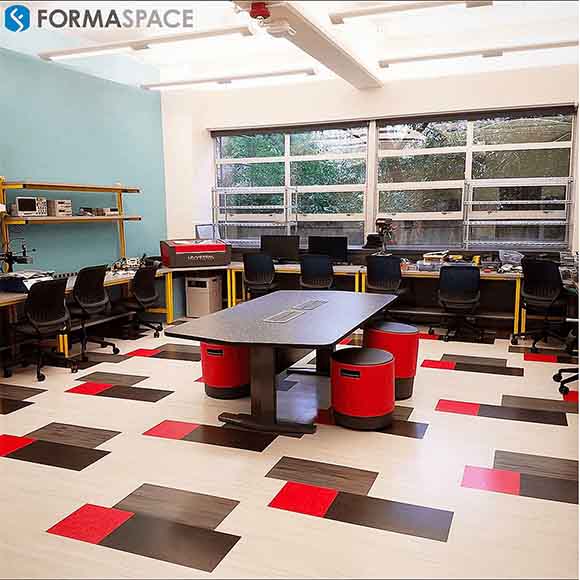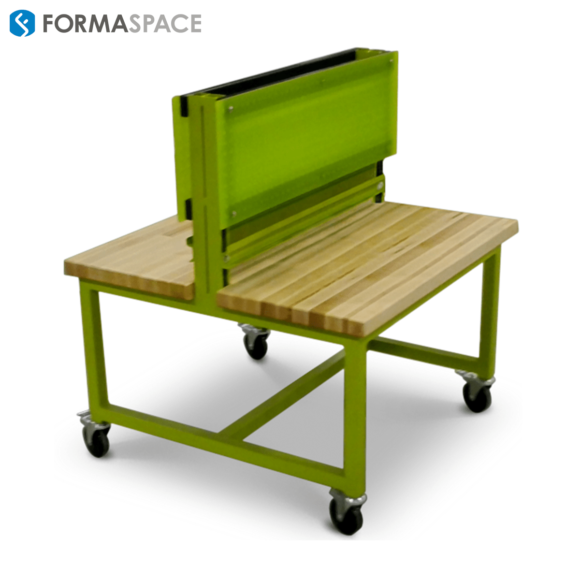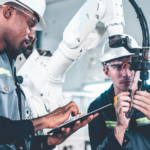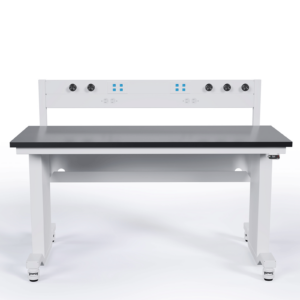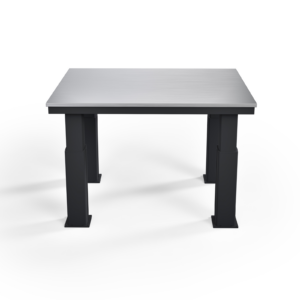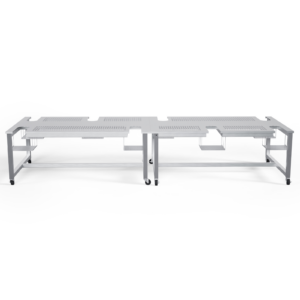Those of you old enough may remember the satisfaction of building a ham radio or an FM tuner using those well-documented do-it-yourself kits from Heathkit or electronic parts from RadioShack. For a decade or two, it seemed like building things yourself was out of fashion. Today the trend is 100% reversed — creating your own “things” is more popular than ever — and collective makerspaces have popped all over the world to help people discover the joy of invention.
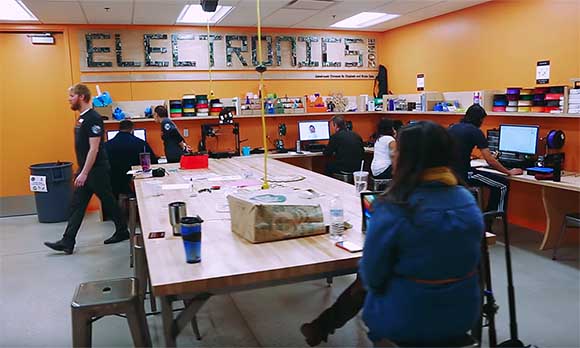
For many Americans, the long tradition of tinkering with mechanical and electronic parts seemed to die out during the 1970s. The venerable Heathkit company — which sold incredibly well-documented ‘do-it-yourself’ kits — was purchased by Zenith and then later a French conglomerate. Heathkit’s hobby kits — never a focus of the acquiring organizations — fell victim to the increasingly globalized electronics marketplace, which drove the cost of new products down to the point they were actually cheaper to buy fully assembled than in kit form.
Good-bye, kits.
No longer did America make much in the way of electronics; the vast majority of TV and radio receiver production moved to Asia.
Fortunately, the flame of do-it-yourself experimentation didn’t die out entirely.
Just like Bill Hewlett and Dave Packard had done decades earlier, Gordon French started something important in a Silicon Valley garage.
In the spring of 1975, French organized the first meeting of the Homebrew Computer Club. Some of the biggest names in computing today were members of the club that started in French’s garage, including the two Steves (Jobs and Wozniak, founders of Apple). A year later, Wozniak had built the Apple I, their first commercial product.
As the PC revolution took off into the 1980s, software development stepped into the spotlight. Do-it-yourselfers and entrepreneurs created thousands if not millions of different kinds of programs for personal computers.
As the maturing PC business morphed into the Internet revolution, the spirit of do-it-yourself collaboration spurred the open software movement. Once dismissed by commercial software vendors as bad for business, the open software movement has helped create the new business models, and foundational software infrastructure has fueled the rapid growth of the Internet as we know it today.
How Did Makerspaces Come into Existence?
During these ‘go go’ boom times in software development, there was a relative lack of interest by Americans in building “things” — after all, just about everything hardware-wise was made overseas in Asia.
Compared to software, there didn’t seem to be that much money in it.
Times have changed. Products like the iPhone and NEST have shown that software controlling mechanical objects makes hardware more interesting than ever before — and connecting them to the Internet makes them even more interesting. This so-called Internet of Things (IoT) is inspiring a new generation of entrepreneurs and experimenters like never before.
As a result, makerspaces, also commonly known as sheds in the UK and Australia and hacker spaces in Germany and Austria, have become a worldwide phenomenon. They allow the public to have access to relatively expensive equipment that can be used to experiment and make prototype products and more.
Some trace the roots of the modern makerspace back to the facility started in Berlin back in 1995. Known as C-Base, this collaborative facility was an offshoot of the German Chaos Computer Club (CCC).
A decade later, Paul Baum got the ball rolling in a major way: Baum opened Metalab in Vienna, Austria in 2006, then promoted the concept widely through a website Hackerspaces.org. Now there are over 1,000 active makerspaces around the world. Check out this interactive map to find out which ones are located near you.
Have You Visited Your Local Makerspace Lately?
As you can see from the map, there are makerspaces all across the world — sponsored by different types of organizations ranging from for-profit businesses to public libraries.
Foundation-based Makerspaces
Professor Neil Gershenfeld from MIT’s Media Lab created the Fab Lab™ Foundation to promote widespread access to modern tools used for invention in each of their member Fab Labs.
For Profit Makerspaces
TechShop, in contrast, is a chain of maker shops organized as a for-profit enterprise; it’s supported by its members through a monthly fee.
Business Accelerator Makerspaces
makerspaces also take the form of Business Accelerators, often organized by universities that want to leverage their research programs by bringing in investors interested in providing angel funding to budding entrepreneurs.
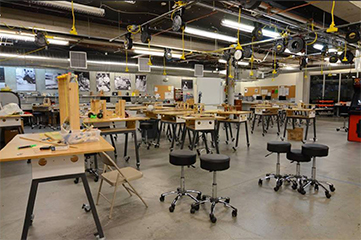
School STEM/STEAM Makerspaces
Schools that are interested in promoting science, technology, engineering, and mathematics curricula in schools (commonly known as STEM) are kitting out makerspaces to promote hands-on learning. STEAM is a related acronym: it adds “Art” to the educational program.
Public Library Makerspaces
Back in a time when individual books were often beyond the means of ordinary members of the public, libraries were founded to share information and make it available to everyone. Similarly today, public libraries are purchasing expensive tools like 3-D printers to make them available to their patrons in newly constructed makerspaces.
Ad Hoc Makerspaces
The advent of social media sites like MeetUp, software development sharing tools like Github, and crowdfunding tools like Kickstarter, have made it possible for people to gather at short notice at different locations to collaborate together on various initiatives, such as on software development projects (commonly called hackathons).
What are You Likely to Find in a Makerspace?
Because makerspaces serve so many different audiences, the equipment at any individual makerspace can vary quite a lot. Here are some typical types of equipment commonly found in many makerspaces:
CNC Machines and 3D Printers
The combination of Computer numerical controlled machining tools, known as CNC machines, and 3-D printers allow individuals to prototype physical product designs, or even engage in small-scale production. (As it turns out, some of the early 3D printers were themselves a product of ‘hacking’ together electronic controllers as part of the open source ‘Rip Rap’ project.)
Electronics Hardware
Purpose-built computer boards like the Arduino and more recently the Raspberry Pi have been designed with experimentation and learning in mind. These new generation computing platforms are small and can be incorporated easily into wearable electronics or Internet of things applications. (See the vendor Adafruit for more inspiration.) Lego Mindstorms also has an active following for budding inventors wanting to learn about how to control mechanical devices with electronic controls.
Fabrication Equipment and Software Development
Makerspaces also are known for providing all kinds of fabrication equipment which could vary from heavy-duty sewing machines to a water jet and laser cutters, band saws and drill presses, woodworking equipment and so on. Other makerspaces may specialize in computer networking equipment and software programming for games development, such as Unity game engine or Minecraft.
What Do You Need to Kit Out an Outstanding Makerspace?
Since the buzz around makerspaces began, many educational facilities have turned to our Formaspace Design Consultants to plan a news-worthy makerspace that attracts tinkerers and innovators of all mediums. See how Formaspace furnished the “Create at Arizona Science Center” here:
Arizona Science Center encourages students to imagine, design, make and connect in their makerspace.
Here are four important suggestions they recommended based on working with numerous makerspace facilities:
1. Make Sure You Build in Flexibility from the Start
Makerspace facility managers need to maximize the use of floor space to accommodate different sized groups and special events. Formaspace Design Consultants recommend tables on casters with portable stools, as well as other storage solutions that can be moved around as needed. Of particular use for makerspaces is the new Formaspace tilting tables. These heavy-duty work tables have unique work surfaces that can be tilted vertically — allowing them to be moved and stacked to the side where they don’t take up much space. This allows a large room of work tables to be converted into open space, such as an event reception, in a matter of minutes.
2. Incorporate Computer Networking, Power, and Storage into Your Furniture
With different members of the public coming and going in makerspaces, staying organized is difficult. That’s why our Formaspace Design Consultants recommend creating order out of chaos by specifying furniture that incorporates built-in cabinets, shelves and bin rails, computer networking jacks, and conditioned power supplies built into the furniture. Things will appear much neater, and you’ll provide a safer, more productive environment for the users.
3. Take Equipment Storage and Security Seriously
Efficient makerspace facility design requires balancing ease of access to equipment and supplies with the need to provide security. Security takes two forms: you need to make sure that potentially hazardous equipment is accessible only to authorized users under facility supervision. Formaspace Design Consultants recommend pairing equipment with dedicated mobile benches. You also need to provide security to prevent theft of equipment and supplies. We can recommend secure storage solutions that can protect your investment but still provide easy access to equipment under the watchful supervision of facility managers.
4. ESD Tables aren’t Just for Tech Manufacturing Facilities
As you may know, if you have experience with electronics, electrostatic discharge (ESD) can quickly ruin a project. Often the accidental discharge can take place without the user being aware of it — causing all kinds of frustration during the prototyping and debugging process. The Design Consultants at Formaspace recommend using our workstations with anti-electrostatic discharge capability built right into the workbench tabletop surface. This solution is much more cost-effective and productive than investing in temporary ESD mats, which are easily lost or damaged.
Want to Learn More About Building a Top-notch Makerspace?
Our Design Consultants here at Formaspace have even more suggestions for you. Why not contact one today?
